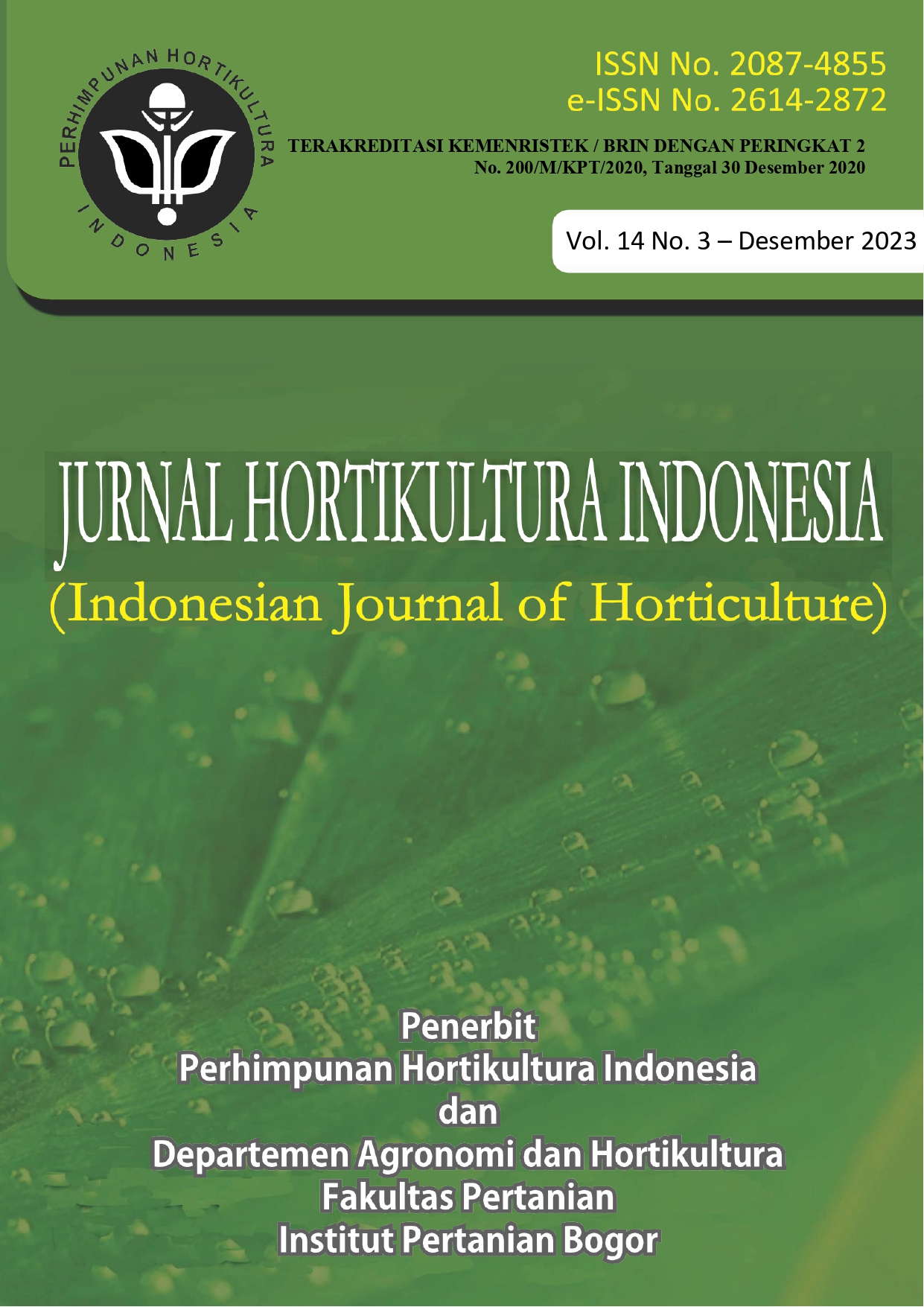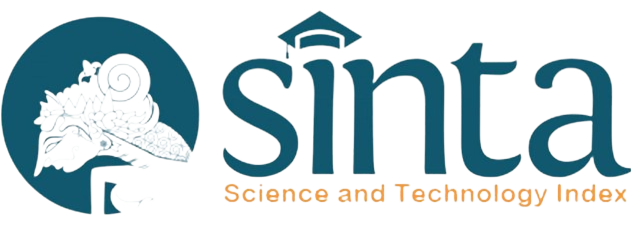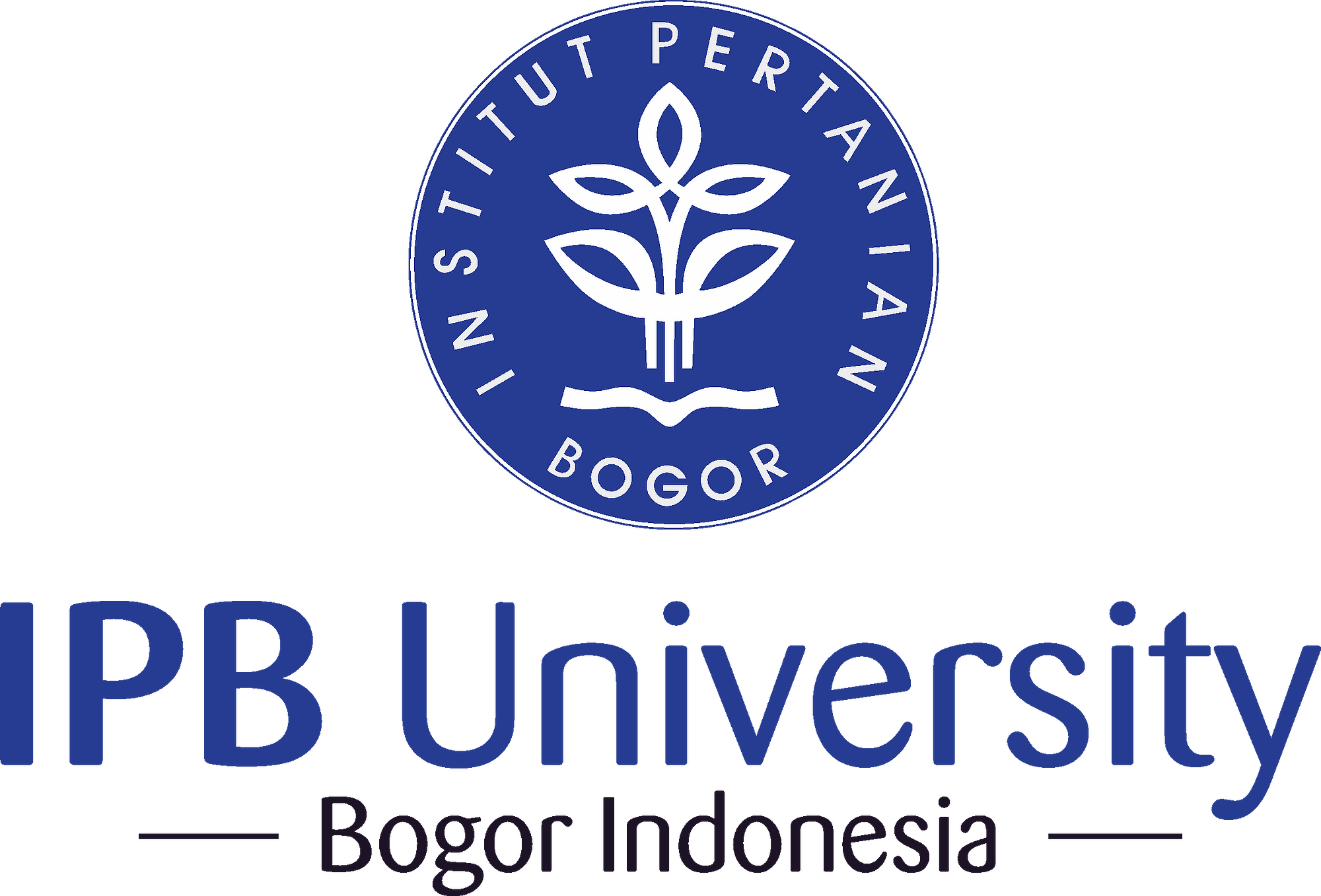Penggunaan Sensor Kelembaban Tanah untuk Penetapan Jadwal Penyiraman Tanaman Cabai melalui Irigasi Tetes
Use of Soil Moisture Sensors to Determine Chili Irrigation Scheduling through Drip Irrigation
Abstract
Fertigation through drip irrigation is an adaptation technology in dealing with climate change. Chili planting using drip irrigation in dry land requires an appropriate watering schedule. The aim of this study was to evaluate the watering method based on soil moisture sensors and evapotranspiration values in chili planting using drip irrigation. The research was conducted at the Cikarawang Experimental Field, IPB University, Bogor, from July to September 2022. Imola chili varieties were grown on fields with available P content of 19.6 ppm (medium) and available K of 84.64 ppm (high) (Mechlih-1), 1.45 % C Organic, and a pH of 6.85. Treatment of the watering schedule of the arrangement in a randomized block design with 1xETc, 2xETc (without sensor), 2xETc-S (using a soil moisture sensor) treatment with 6 repetitions. The results showed that all watering methods could be used to support chili production with an average productivity of 8,825 - 10,797 ton ha-1. In general, the 2xETc-S treatment produced the highest fruit weight per bed compared to the 1xETc and 2xETc treatments. The highest unmarketable pasar chili fruit weight per bed was in the 2xETc treatment. For commercial field implementation, it is necessary to consider the number of sensors, humidity thresholds, and watering volume to maximize quality and productivity.
Keywords: dryland, evapotranspiration, irrigation scheduling, soil moisture sensor
Downloads
You are free to:
- Share — copy and redistribute the material in any medium or format for any purpose, even commercially.
- Adapt — remix, transform, and build upon the material for any purpose, even commercially.
- The licensor cannot revoke these freedoms as long as you follow the license terms.
Under the following terms:
- Attribution — You must give appropriate credit, provide a link to the license, and indicate if changes were made. You may do so in any reasonable manner, but not in any way that suggests the licensor endorses you or your use.
- ShareAlike — If you remix, transform, or build upon the material, you must distribute your contributions under the same license as the original.
- No additional restrictions — You may not apply legal terms or technological measures that legally restrict others from doing anything the license permits.
Notices:
You do not have to comply with the license for elements of the material in the public domain or where your use is permitted by an applicable exception or limitation.
No warranties are given. The license may not give you all of the permissions necessary for your intended use. For example, other rights such as publicity, privacy, or moral rights may limit how you use the material.













